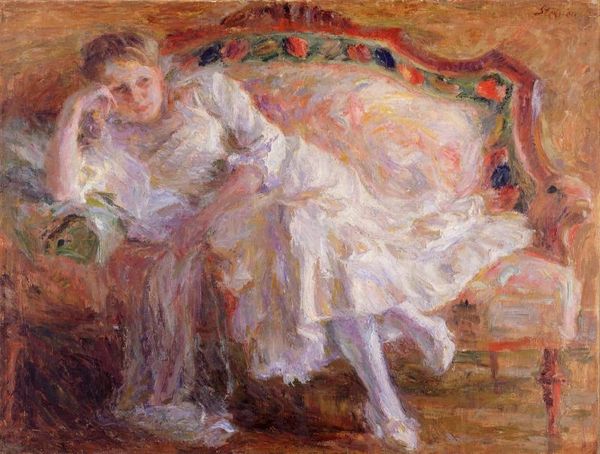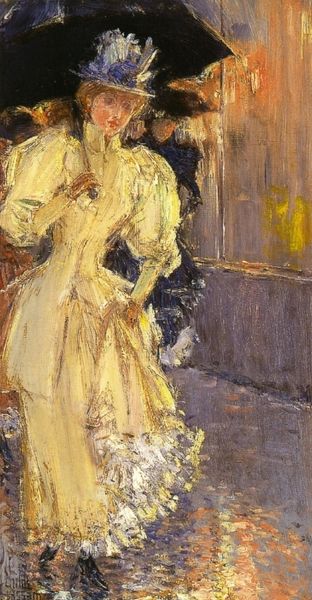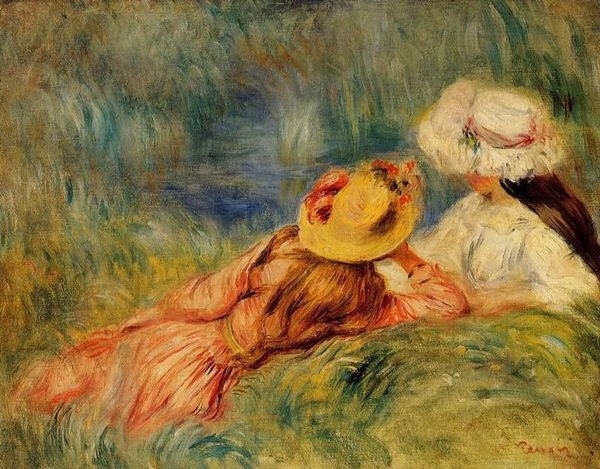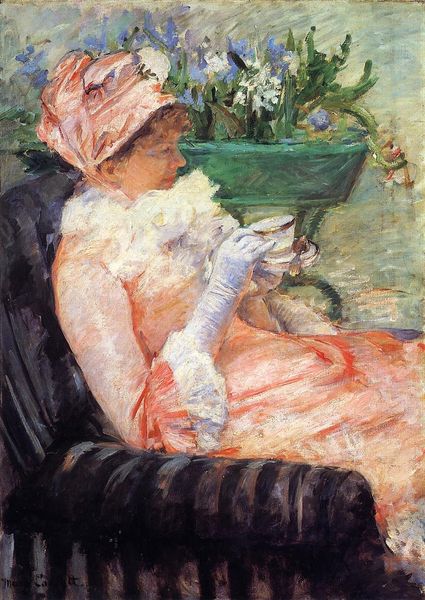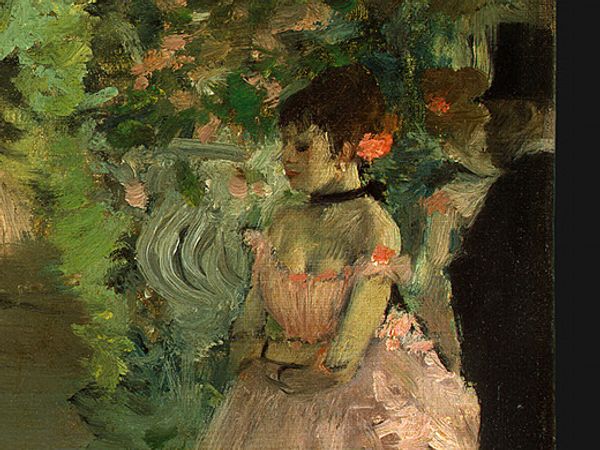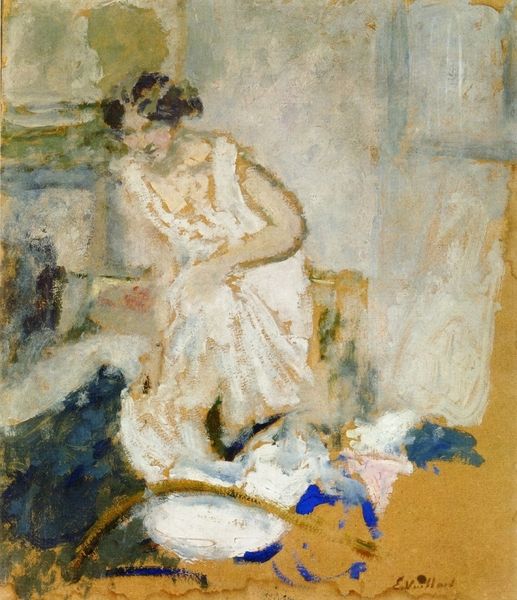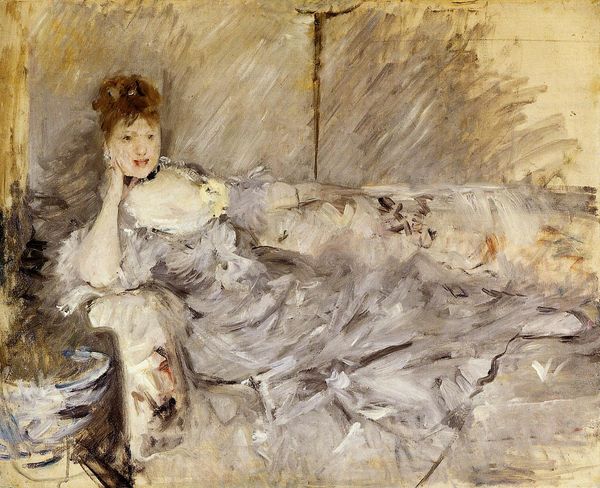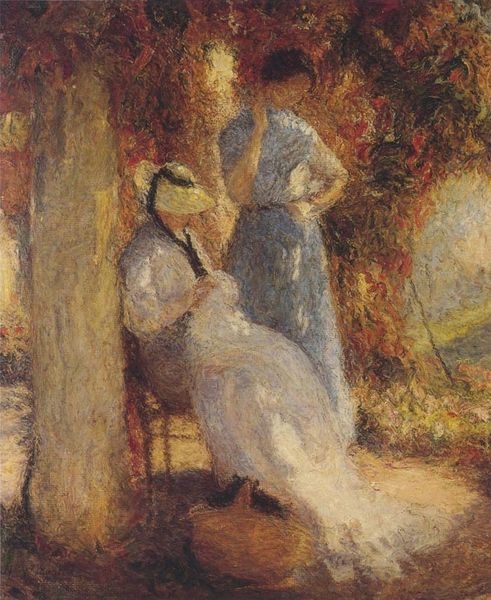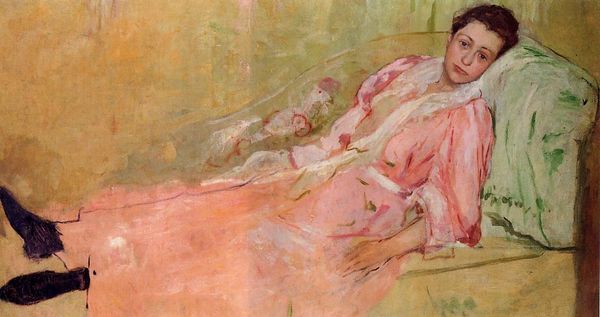
Copyright: Public domain
Curator: Konstantin Korovin’s "Bakhchisaray," painted in 1907 using oil paint, is what we’re looking at today. It’s interesting, wouldn’t you agree? Editor: My initial reaction is this captured energy. There's movement everywhere you look. A fleeting impression of people basking, shimmering. Curator: Indeed. Note how the artist utilizes bold brushstrokes and a vibrant palette, characteristic of the Impressionist style. Light is captured, playing on the figures. It is so airy, capturing the instant feeling, as we look upon a gathering of locals. Korovin actually travelled through the Crimea, sketching, finding such moments in markets and squares. Editor: The composition is loose, almost daring in its abstraction, which draws us in to observe. The foreground is as relevant as the subject’s bodies. Note how those colours build upon each other: blues, oranges and whites come into sharp focus through their relations, pushing the human form back into the surroundings. What feelings might the choice of clothing suggest to those times and people? Curator: Well, it echoes the Orientalist movement's fascination with "exotic" cultures and locations. It shows off his use of colour and brushstroke, I’d suggest. What does strike me is the faces lack detail. They are deliberately vague, yet each posture offers distinct stories about the local setting, inviting interpretation through shape, texture and relations between colours. It pulls me in and asks me who these people might be. Editor: I’m less bothered by what’s absent. The freedom and sense of spontaneity it creates is just so intoxicating! It isn't concerned with narrative precision so it transcends the need to label things by names. I lose myself thinking of all the things people miss out on if they look at art as a test of labels. Curator: Korovin’s masterful use of colour captures the warm atmosphere perfectly. It serves to romanticize a certain time or space through impression rather than capturing what he felt on that day, painting with freedom about something he was witness to and moved him greatly, a sentiment that still exists when our eyes rest on "Bakhchisaray". Editor: Absolutely, it is very engaging on an immediate visceral level. So what better thing to take away from a painter's reflection? The painting is a vessel. We need nothing else to experience a feeling with it, from inside ourselves, today.
Comments
No comments
Be the first to comment and join the conversation on the ultimate creative platform.

